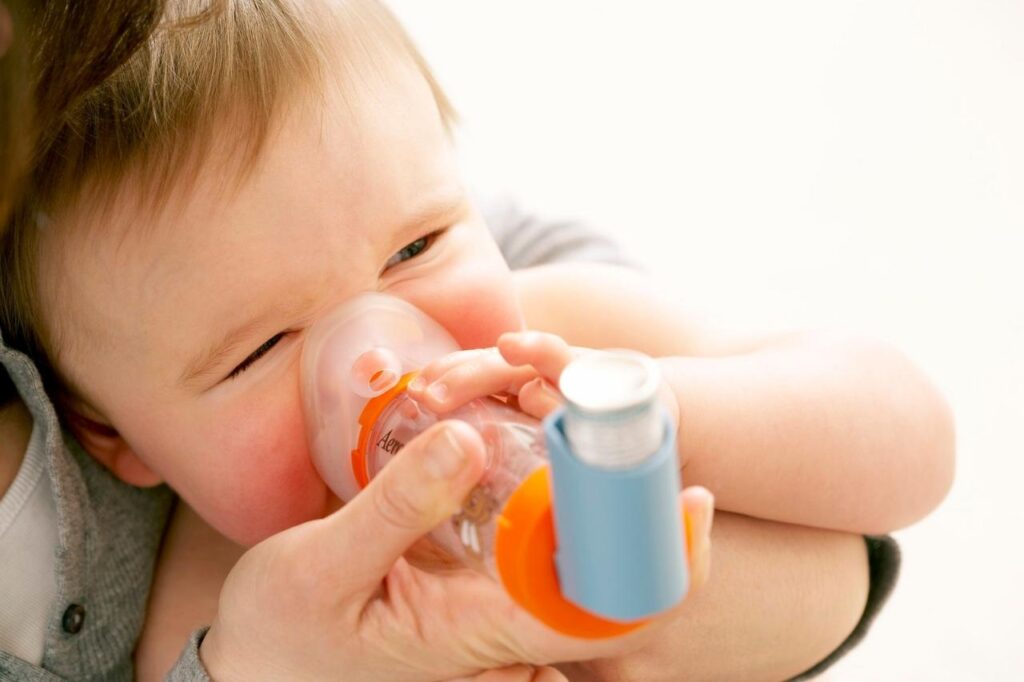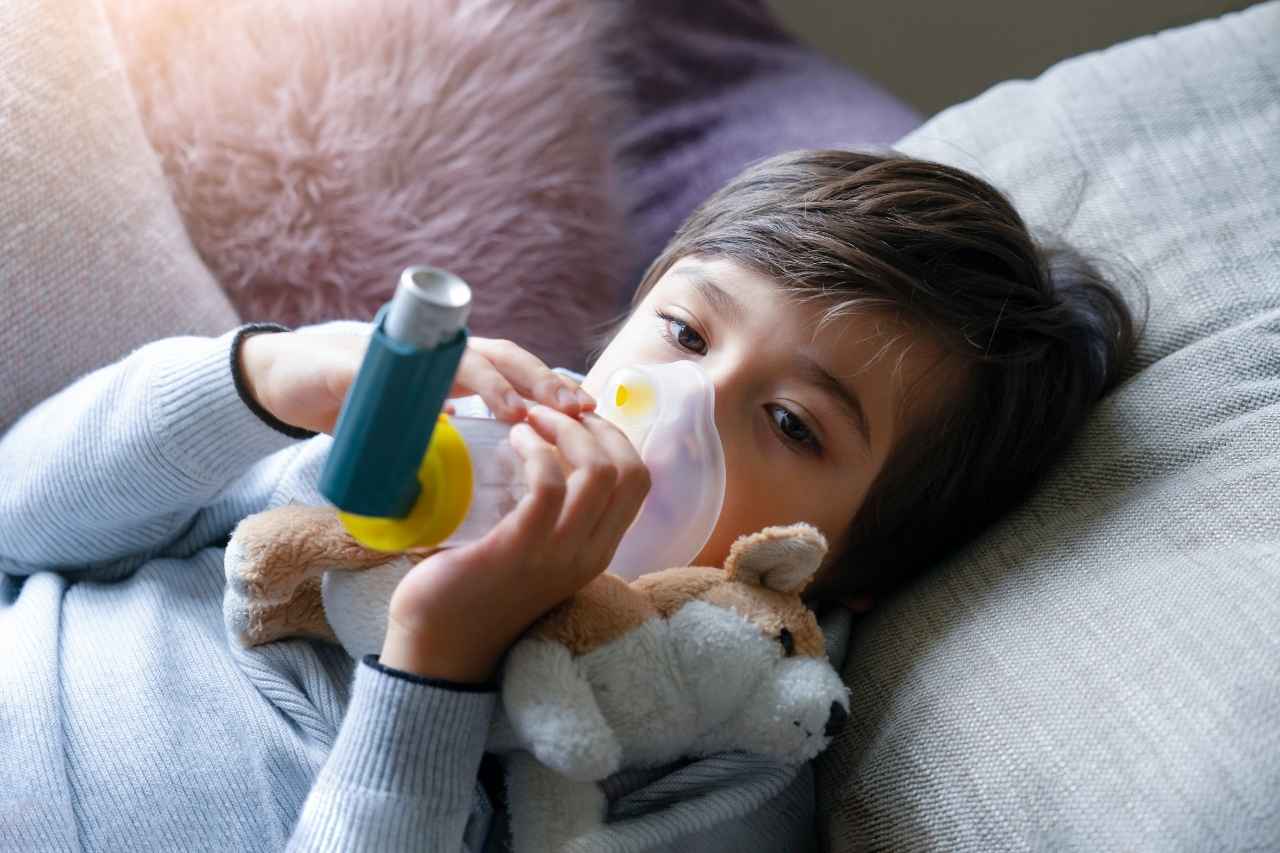Childhood asthma can be best described as a long-term condition of the lungs that affects millions of children every day worldwide. It occurs as a result of the swelling and constriction of the air passages of the lungs making it difficult for an individual to breathe comfortably.
In order to manage the disease, parents must understand how to recognize the warning signs, and symptoms of the illness, its causative agents and preventive measures and other strategies. This is important because with the right management, a child does not have to be symptomatic and can enjoy life’s full activities, however, with control, the complications associated with asthma can be avoided.
This blog will elaborate on the causes of childhood asthma with regard to symptoms, triggers, diagnosis management and treatment options.
What is Childhood Asthma?

Childhood Asthma s said to be a chronic lung disease involving systemic inflammatory responses of the airways resulting in narrowing airways and obstructed breathing.
The airways are also known to be reactive to some stimulus leading to symptoms such as wheezing coughing and difficulty in breathing.
Prevalence: This condition worlds asthmas in children and its approaching activities were categorised at the very early years although some were recorded much later. This condition ranks among the most prevalent chronic diseases in children
Genes: it is common to have an increased asthmatic gene among some members of the family. Presumably the child will also have tendencies to asthma in the conditions where one or both of the parents have asthma.
Life long condition: it is often the case that many children may be tamed to have asthmatic conditions but some are known to have the condition even when they grow up.
Symptoms of Childhood Asthma
As in everything else, prevention is better than cure when it comes to asthma. Parents need to pay close attention to the signs of asthma in their growing children. Some of the common symptoms include:
Wheezing: The sound accompanying respiration is that of a whistle, particularly when exhaling.
Coughing: It, especially when there is a cough if common, that is worse at night or in the morning, may speak of asthma or cough variant asthma.In addition, a cough after or during an upper respiratory infection may indicate asthma.
Dyspnea: Asthmatic children tend to have breathlessness especially when exertion is made, or when such children are stimulated by certain factors.
Chest Discomfort: Tightness or pressure in the chest is also a common complaint.
The distinction between a cough and cough and asthmatic coughing should be made. No cough is not related to asthma. However, in the event that a child develops a dry persistent cough, particularly at night, this could be indicating asthma.
Asthma Control Test: Control of the asthma profiles can also be done using the Childhood Asthma Control Test. These tests help in gauging how controlled the asthma is and may also come with a pdf download variant.
Common Triggers of Childhood Asthma
Several factors can cause symptoms of asthma. It is important to determine the triggers and address them in order to manage the disease effectively.
Allergens Inside and Outside the House:
Pollen: Asthmatic children who are sensitive to these allergies can get asthma attacks from tree, grass, and weed pollens.
Dust Mites: Less than 8 milli-inches of these little creatures are often found in beddings, carpets, and even furniture and can aggravate asthma.
Fungi: Fungus reproducing spores are often found in humid conditions, and they can set autism sufferers off.
Animal Hair: Debris of tamed animals can be causing concern.
Factors That Cause the Environment to Change:
Polluted Air: Breathing poor quality air such as smog or vehicle exhaust can make asthma symptoms worse in patients.
Environmental Tobacco Smoke: Children who have paternally smoking parents are likely to have asthma and if they smoked as children, their symptoms will be worse.
Gas-powered stoves: Gas stoves can also cause indoor air pollution that will lead to an increased incidence of asthma attacks.
Miscellaneous Causes of Asthma:
Low Temperature: Low and dry temperature air leads to inflammation of the airway and can cause an asthma attack.
Overweight: There is increased emphasis on the effects of obesity on the degree of expression of asthma symptoms.
Exertion: Physical activities such as playing sports can bring about asthma attacks especially in hot, cold or dry weather conditions. But with the right strategies, these children can be active as well.
Diagnosis of Childhood Asthma
Physical examination: Diagnosing asthma begins with a physician’s assessment of the child’s medical history, a physical examination and series of tests to evaluate the child’s lung capacity and function. In this case physical examination will involve assessment of the child’s respiratory system for respiratory distress, abnormal breath sounds such as wheezing and any other abnormal signs.
Lung Function Tests: This also extends to carrying out a procedure involves spirometry tests to assess the suspected condition of a child, which in this case is asthma.
Early diagnosis: Taking this into account it is necessary to undertake action which seeks to identify cases of asthma as speedily as possible. It’s important in the management of asthma to initiate treatment early when the condition is in its early stage so that it does not progress and cause irreversible damage to the lungs.
Childhood Asthma Treatments
Management of asthma in children largely involves taking medications as well as making some lifestyle modifications.
Inhalers and Medication: Inhalers are an item common with people suffering from asthma. These are equipment’s utilised to spray medicines into the lungs mainly to relieve any swelling or constriction of the bronchi. These symptoms may be treated differently and tablets or pills given to relieve a specific symptom.
Asthma Action Plans: With the patient ceasing to be the passive recipient of services and participating in making decisions together with the doctor about control and management of the patient’s asthma, a lot of other issues relating to the patient’s activities are included in this document. This outlines ‘normal’ and ‘pour’ efforts ‘in case of an asthma attack’ inclusive and thus the entire family of the patient has to be ready for such scenarios.
Curability: It is manageable however there is no guarantee that it could be altogether eliminated. Some people may develop asthma as a child yet later in life do not experience it again, other people may develop and suffer asthma.
Managing Childhood Asthma
Attention to Childhood Asthma management involves not only topical interventions and medications, but also their combination with avoidance of triggers, regular medication use, and symptom control.
Trigger Avoidance: Keeping the home free of allergens, avoiding sources of second hand smoke, and reducing exposure to known allergens can help manage asthma.
Medication Management: Should be ensured that medication especially inhalers are utilized appropriately to avert the danger of asthma attacks.
Regular Check-ups: To make sure asthma is well controlled long term, a patient should be regularly seen by a paediatrician and simplified diagnostic tools such as the Childhood Asthma Control Test should be used.
FAQs
Is Childhood Asthma Genetic?
Yes, there is considerable evidence that genetics composes an important factor for childhood asthma.
Can Childhood Asthma Cause COPD?
COPD is quite different from asthma, however poorly controlled asthma may be a factor for the development of various chronic lung conditions.
Does Childhood Asthma Damage Lungs Permanently?
Untreated asthma, however, is capable of causing the patient to sustain changes in their lung anatomy.
Can You Grow Out of Childhood Asthma?
In many cases, childhood asthma resolves as the years pass but it does have episodes in the later years.
Conclusion
There are effective methods of dealing with this problem as asthma in children is not a cause for worry. Early identification of the signs, seeking to eliminate the causative agent and adherence to treatment are the major determinants of the child’s health and the threat of the illness returning. Filling in an asthma action plan together with the doctor who will care for the child subjects the condition to better control. Parents need to be alert and consider the possibility of symptom development in their child and take active steps with the help of medical personnel to enable the child to be healthy and active.
Also Read: How to Improve Lung Health: Tips to Reduce the Risk of Respiratory Issues













